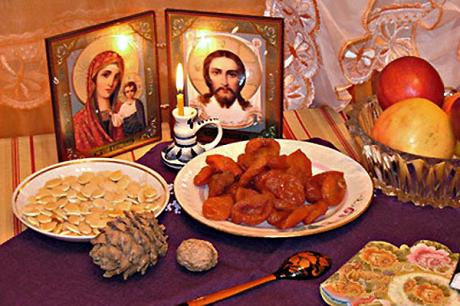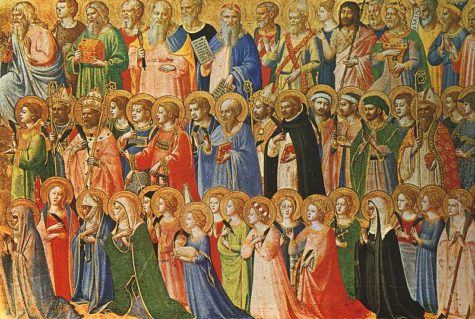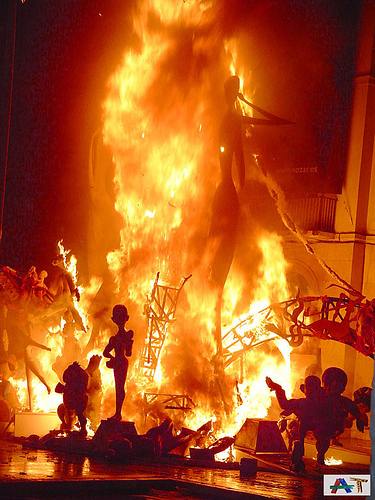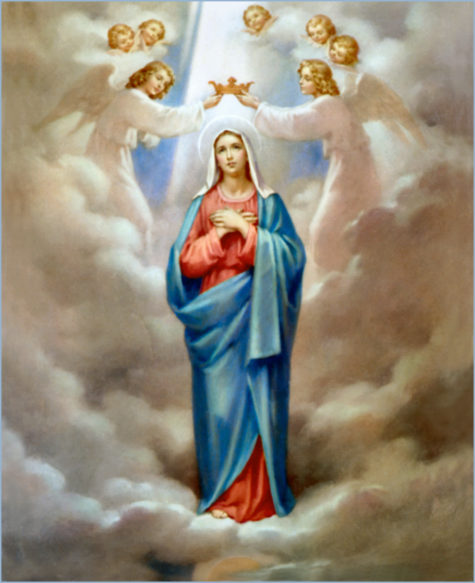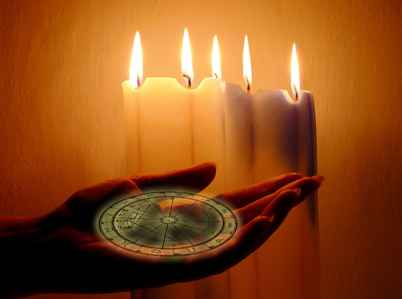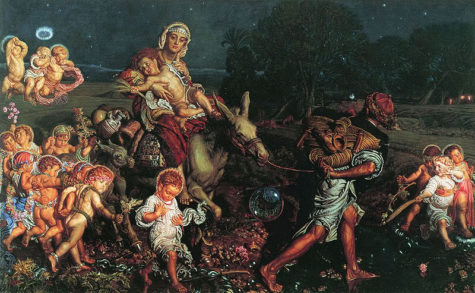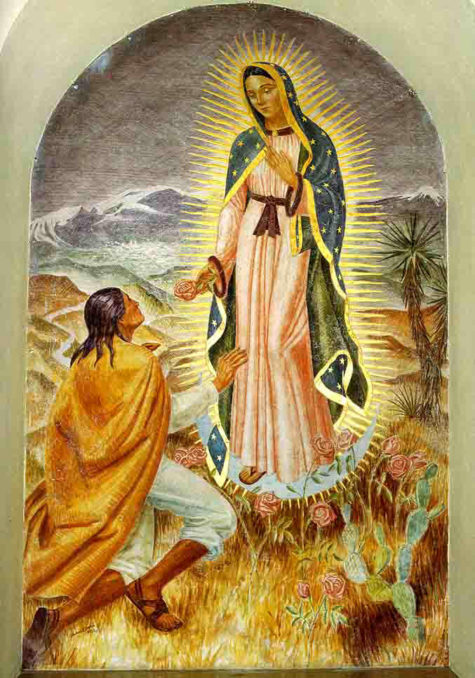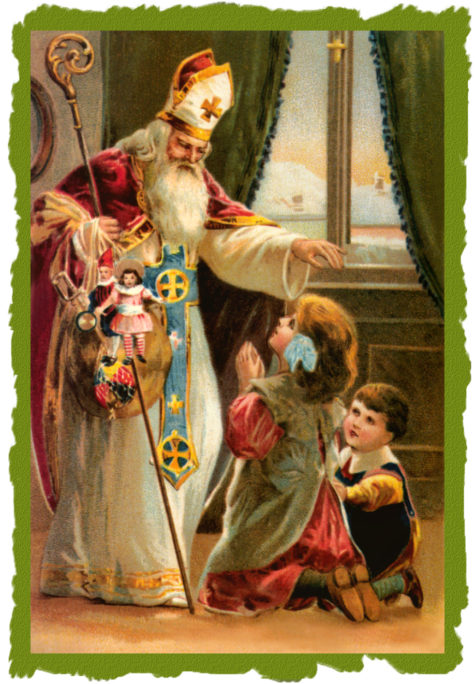Catholic
The Nativity Fast is a period of abstinence and penance practiced by the Eastern Orthodox, Oriental Orthodox, and Eastern Catholic Churches, in preparation for the Nativity of Jesus, (December 25).
This is a joyous fast in anticipation of the Nativity of Christ. That is the reason it is less strict than other fasting periods. The fast is divided into two periods. The 1st period is November 15th through December 19th when the traditional fasting discipline (no meat, dairy, fish, wine, and oil) is observed.
There is dispensation given for wine and oil on Tuesdays and Thursdays. Similarly, fish, wine, and oil are permitted on Saturdays and Sundays. The 2nd period is December 20th through 24th when the traditional fasting discipline (no meat, dairy, fish, wine, and oil) is observed. There is dispensation given for wine and oil only on Saturday and Sunday during this period. Here are the guidelines:
- Meat – Abstain
This includes: beef, chicken, pork, turkey, elk, veal, lamb, deer, rabbit, buffalo, and so forth
- Dairy – Abstain
This includes milk, eggs, cheese, butter, yogurt, cream, and so forth
- Fish – Permitted only on Saturdays and Sundays before December 20.
This includes fish with a backbone, but does not include shrimp, octopus, shellfish, squid, or other seafood. Note: (some permit fish Tuesdays and Thursdays also)
- Wine – Permitted only on Tuesdays, Thursdays, Saturdays, and Sundays before December 20.
Some include all types of alcohol in this category.
- Oil – Permitted only on Tuesdays, Thursdays, Saturdays, and Sundays before December 20.
Abstinence includes refraining from the food and drink mentioned above, as well as from smoking. The Eucharistic Fast means abstaining from at least the previous midnight for communing at a morning Liturgy.
The Purpose of Fasting
The purpose of fasting is to focus on the things that are above, the Kingdom of God. It is a means of putting on virtue in reality, here and now. Through it we are freed from dependence on worldly things. We fast faithfully and in secret, not judging others, and not holding ourselves up as an example.
Fasting in itself is not a means of pleasing God. Fasting is not a punishment for our sins. Nor is fasting a means of suffering and pain to be undertaken as some kind of atonement. Christ already redeemed us on His Cross. Salvation is a gift from God that is not bought by our hunger or thirst.
- We fast to be delivered from carnal passions so that God’s gift of Salvation may bear fruit in us.
- We fast and turn our eyes toward God in His Holy Church.
- Fasting and prayer go together.
- Fasting is not irrelevant.
- Fasting is not obsolete, and it is not something for someone else.
- Fasting is from God, for us, right here and right now.
- Most of all, we should not devour each other.
- We ask God to “set a watch and keep the door of our lips.”
Do NOT Fast
- Between December 25 and January 5 (even on Wednesdays and Fridays);
- If you are pregnant or nursing a newborn;
- During serious illness;
- Without prayer;
- Without alms-giving;
- According to your own will without guidance from your spiritual father.
Source: Antiochian
This is the day when all the saints are honored, especially those who do not have a day of their own. Following the triumph of the Holy Roman Empire over Celt-occupied lands in the 1st century A.D., the Romans incorporated many of the Celtic traditions, including Samhain, from which the holiday Halloween developed.
Eight hundred years later, the Roman Catholic Church further modified Samhain, designating November 1 as All Saints’ Day.The day was formerly known as Allhallowmas, hallow meaning to sanctify or make holy. All Saints’ Day is known in England as All Hallows’ Day, and the evening before is All Hallows’ Eve, the origin of the American word “Halloween.”
Source: Almanac.com
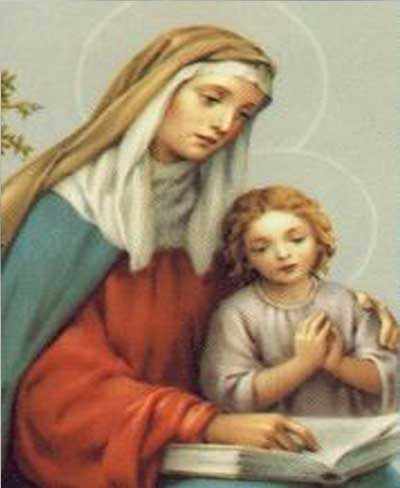 July 26, is the Feast of St. Anne, Mother of Mary and grandmother of Jesus.
July 26, is the Feast of St. Anne, Mother of Mary and grandmother of Jesus.
Shellfish and lobster are served in France for their Saint Anne’s Day, July 26th. The most celebrated sight of St. Anne feast day is the annual ten day Saint Ann’s Solemn Novena made at Saint Ann’s Monastery Church at the Shrine of St. Ann de Beaupre in Quebec, Canada. The ten day novena begins on July 16 ends on July 26th, the feast of St Ann.
Patron Anne intervenes against poverty and for cabinetmakers; carpenters; childless couples; equestrians; grandmothers; grandparents; homemakers; housewives; miners; mothers; pregnancy; pregnant women; and women in labor.
If you fall into the above categories, this might be a good day to say some prayers to Saint Anne. The series of prayers for the novena can be found here.
Related Links:
- Saint Anne (general information)
- Prayer to Saint Anne
- Invoking Saint Anne
Bonfires of Saint John is a popular festival celebrated around June 24, (Saint John’s day) in several towns in Spain. For this festival, people gather together and create large bonfires from any kind of wood, such as old furniture, and share hot chocolate while teens and children jump over the fires.
A pie of tuna (coca anb tonyina) and early figs (bacores) is traditionally eaten while setting up the events.
The festival is celebrated throughout many cities and towns; however, the largest and most elaborate version is in Alicante. On the night of St John, gigantic (20 to 30 foot high) explosive caricatures (ninots) are paraded through the streets and exploded in a spectacular finale with fireworks and pyrotechnics, making this festival into the most important (and loudest!) cultural event in Alicantinian society.
Collected from various sources
May 30 is celebrated as the Feast of the Queen of Heaven. Queen of Heaven, lovely goddess of May, fully grown and gloriously enthroned in pagan and Christian times. May honors the Blessed Virgin Mary, who is the modern-day Queen of Heaven, though somewhat demoted in status from her original divinity.
Have you noticed that it was always Mary who caused the miracles, who appeared to children – as at Lourdes and Fatima? the Queen of Heaven is a hard-working woman, and we light white candles to her. Praise active womanhood wherever you are and all will be well.
Calling upon the Queen of Heaven for aid in times of need is such a universal practice, that I can’t help but think it must be powerful and effective. If you’d like to try it for yourself, here is a prayer to Our Mother of Perpetual Help:
O Mother of Perpetual Help, grant that I may ever invoke Thy most powerful name, which is the safeguard of the living and the salvation of the dying.
O Purest Mary, O Sweetest Mary, let Thy name henceforth be ever on my lips. Delay not, O Blessed Lady, to help me whenever I call on Thee, for, in all my needs:
(name your request for help)
In all my temptations I shall never cease to call on Thee, ever repeating Thy sacred name, Mary, Mary
(again make your request for help).
O what consolation, what sweetness, what confidence, what emotion fills my soul when I pronounce Thy sacred name, or even only think of Thee. I thank God for having given Thee, for my good, so sweet, so powerful, so lovely a name. But I will not be content with merely pronouncing Thy name: let my love for Thee prompt me ever to hail Thee, Mother of Perpetual Help. Amen.
(Now recite nine Hail Marys)
From: The Grandmother of Time and other sources.
It’s no accident that Groundhog Day and Candlemas are celebrated together, for both signify the triumph of light over darkness, spring over winter. Candlemas was originally a Celtic festival marking the “cross-quarter day,” or midpoint of the season. The Sun is halfway on its advance from the winter solstice to the spring equinox.
Candlemas is the Christianized name for Imbolc, and all of the church candles are blessed for the year. The Virgin Mary is also honored. Today, this holiday is chiefly connected to weather lore. Even our American calendar keeps the tradition of Groundhog Day, a day to predict the coming weather. The Groundhog Day tradition tells us that if the Groundhog sees his shadow, there will be six more weeks of bad weather. An old British rhyme instructed:
If Candlemas day be fair and bright,
Winter will have another flight.
If Candlemas day be shower and rain,
Winter is gone and will not come again.
We pagans see the God as an infant during the time of Imbolc, and he is nursing from the Goddess and growing in power. It is the time for banishing Winter. We gather together the greens that adorned our homes during the Yule, and then we add these greens to the Imbolc fire. We chant and dance saying “We banish Winter! We welcome Spring!”
We light candles in each window and let them burn throughout the night. It is also an appropriate time for dedicating yourself to the Pagan path and purifying your home. You can also make candles for the coming year and consecrate new ritual items.
The Christian church expanded this festival of light to commemorate the purification of the Virgin Mary and her presentation of the infant Jesus in the Temple. Candlelit processions accompanied the feast day.Since the traditional Candlemas celebration anticipated the planting of crops, a central focus of the festivities was the forecasting of either an early spring or a lingering winter.
Sunshine on Candlemas was said to indicate the return of winter. Similarly:
“When the wind’s in the east on Candlemas Day
There it will stick till the second of May.”
A bear brought the forecast to the people of France and England, while those in Germany looked to a badger for a sign. In the 1800s, German immigrants to Pennsylvania brought their Candlemas legends with them. Finding no badgers but lots of groundhogs, or woodchucks, there, they adapted the New World species to fit the lore. Today that lore has grown into a full-blown festival, with Punxsutawney Phil presiding. For all things groundhog, visit the folks at Punxsutawney and see what Phil is predicting this year.
Sources: Almanac.com and Rose Ariadne
Feast of the Holy Innocents, also called Childermas, or Innocents’ Day, festival celebrated in the Christian churches in the West on December 28 and in the Eastern churches on December 29 and commemorating the massacre of the children by King Herod in his attempt to kill the infant Jesus (Matthew 2:16–18). These children were regarded by the early church as the first martyrs, but it is uncertain when the day was first kept as a saint’s day. At first it may have been celebrated with Epiphany, but by the 5th century it was kept as a separate festival. In Rome it was a day of fasting and mourning.
It was one of a series of days known as the Feast of Fools, and the last day of authority for boy bishops. Parents temporarily abdicated authority. In convents and monasteries the youngest nun and monk were allowed to act as abbess and abbot for the day. These customs, which mocked religion, were condemned by the Council of Basel in 1431.
In medieval England the children were reminded of the mournfulness of the day by being whipped in bed in the morning; this custom survived into the 17th century. See Dyzymas Day.
The day is still observed as a feast day and, in Roman Catholic countries, as a day of merrymaking for children.
Source: Britannica.com
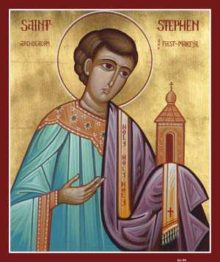 St Stephen’s Day, celebrated every year on 26 December, draws together a number of solstice traditions. We have already learned of the ancient practice of hunting the wren, the King of all birds (Day of the Wren), and of displaying the tiny corpse around the villages throughout Britain and Ireland. The origins of this custom probably date back to the time when kings were slaughtered after a year in office – and in France up until the seventeenth century the first person to kill and display the body of the wren was chosen king for a day at the time of the Feast of Fools.
St Stephen’s Day, celebrated every year on 26 December, draws together a number of solstice traditions. We have already learned of the ancient practice of hunting the wren, the King of all birds (Day of the Wren), and of displaying the tiny corpse around the villages throughout Britain and Ireland. The origins of this custom probably date back to the time when kings were slaughtered after a year in office – and in France up until the seventeenth century the first person to kill and display the body of the wren was chosen king for a day at the time of the Feast of Fools.
St. Stephen himself, according to legend, was once a servant of the biblical King Herod. When he saw the star of the nativity he sought to know more of the Child of Wonder born in the stable, and as a result changed his allegiance to a new king.
The association of the wren killing with St. Stephen’s Day may well derive from a legend of the saint’s visit to Scandinavia. In this story Stephen, having been captured by soldiers, was about to make his escape when the wren uttered its noisy song and awoke his guards – for which reason the wren is said to be unlucky and it is, indeed, considered a misguided act to kill the bird on any other day of the year.
St. Stephen’s Day in Wales is known as Gŵyl San Steffan. One ancient Welsh custom, discontinued in the 19th century, included bleeding of livestock and “holming” by beating with holly branches of late risers and female servants. The ceremony reputedly brought good luck.
St. Stephen’s Day (Sant Esteve) is a traditional Catalan holiday. It is celebrated with a big meal including canelons. These are stuffed with the ground remaining meat from the escudella i carn d’olla, turkey, or capó of the previous day.
Stephanitag is a public holiday in mainly Catholic Austria. In the Archdiocese of Vienna, the day of patron saint St. Stephen is even celebrated on a Sunday within the Octave of Christmas, the feast of the Holy Family. Similar to the adjacent regions of Bavaria, numerous ancient customs still continued to this day, such as ceremonial horseback rides and blessing of horses, or the “stoning” drinking ritual celebrated by young men after attending church service.
Another old tradition was parades with singers and people dressed in Christmas suits. At some areas these parades were related to checking forthcoming brides. Stephen’s Day used to be a popular day for weddings as well. These days a related tradition is dances of Stephen’s Day which are held in several restaurants and dance halls.
In Finland the most well known tradition linked to the day is “the ride of Stephen’s Day” which refers to a sleigh ride with horses. These merry rides along village streets were seen in contrast to the silent and pious mood of the preceding Christmas days. This tradition more than likely relates to the following legend about this saint, who is generally called the first Christian martyr.
The story is as follows:
St Stephen is said to have reached Sweden, and to have established a church there from which he rode forth to preach and teach the Christian message. To enable him to travel the great distances through often inhospitable country he had a string of five horses two red, two white, and one dappled. Whenever one of these became tired Stephen would simply mount another. However, as he was traveling through a particularly deep stretch of forest, he was set upon by brigands, who killed him and tied his body to the back of an unbroken colt. This beast, bearing the saint’s body, galloped all the way back to Stephen’s home. His grave there subsequently became a place of pilgrimage and perhaps because of the association with horses, sick beasts were brought there for healing. Stephen is still known as the patron saint of horses to this day.
The themes of St. Stephen’s day, then, have to do with death and resurrection and animals. The former makes it particularly appropriate that it is on this day that the Mummer plays are most often performed.
From: The Winter Solstice
December 12th is the feast of Our Lady of Guadalupe, patroness of the Americas, unborn children, and the New Evangelization. The day is particularly special for Americans of Mexican heritage, as it honors the belief that Jesus’ mother Mary, who is Mexico’s patron saint, appeared to a man in Mexico City twice in 1531.
Our Lady of Guadalupe is unlike any other apparition of the Virgin Mary. First, it is the only apparition where Our Lady left a miraculous image of herself unmade by human hands. Second, it is the only universally venerated Madonna and Child image where Our Lady appears pregnant instead of holding the Infant Jesus.
Feast Day Celebration Ideas:
Many parishes with large Hispanic populations have a special celebration leading up to the December 12th feast of Our Lady of Guadalupe. Find one of these celebrations happening in your local community and join in the celebration. Some parishes will also host a reception or party in honor of the feast day.
If not, hold your own celebration of Our Lady by inviting friends and family to your home for a traditional Mexican meal. Decorate your table with colorful flowers in bright reds and pinks, blues and greens, and together recite the prayer (below) to Our Lady written by Pope St. John Paul II.
Prayer To Our Lady of Guadalupe:
“O Immaculate Virgin, Mother of the true God and Mother of the Church!, who from this place reveal your clemency and your pity to all those who ask for your protection, hear the prayer that we address to you with filial trust, and present it to your Son Jesus, our sole Redeemer.
Mother of Mercy, Teacher of hidden and silent sacrifice, to you, who come to meet us sinners, we dedicate on this day all our being and all our love. We also dedicate to you our life, our work, our joys, our infirmities and our sorrows. Grant peace, justice and prosperity to our peoples; for we entrust to your care all that we have and all that we are, our Lady and Mother. We wish to be entirely yours and to walk with you along the way of complete faithfulness to Jesus Christ in His Church; hold us always with your loving hand.
Virgin of Guadalupe, Mother of the Americas, we pray to you for all the Bishops, that they may lead the faithful along paths of intense Christian life, of love and humble service of God and souls. Contemplate this immense harvest, and intercede with the Lord that He may instill a hunger for holiness in the whole people of God, and grant abundant vocations of priests and religious, strong in the faith and zealous dispensers of God’s mysteries.
Grant to our homes the grace of loving and respecting life in its beginnings, with the same love with which you conceived in your womb the life of the Son of God. Blessed Virgin Mary, protect our families, so that they may always be united, and bless the upbringing of our children.
Our hope, look upon us with compassion, teach us to go continually to Jesus and, if we fall, help us to rise again, to return to Him, by means of the confession of our faults and sins in the Sacrament of Penance, which gives peace to the soul.
We beg you to grant us a great love for all the holy Sacraments, which are, as it were, the signs that your Son left us on earth.
Thus, Most Holy Mother, with the peace of God in our conscience, with our hearts free from evil and hatred, we will be able to bring to all true joy and true peace, which come to us from your son, our Lord Jesus Christ, who with God the Father and the Holy Spirit, lives and reigns for ever and ever. Amen.”
~Pope John Paul II’s Prayer to Our Lady of Guadalupe
~Mexico, January 1979
Many countries in Europe celebrate the Feast of Sinterklaas, or St. Nicholas, on the eve of December 6. After dinner, families hunt for their presents, following clues in funny, anonymous poems. They also eat candies and cookies, especially spicy crispy ginger-cookie figures formed in a traditional wooden mold.
The legend of St. Nicholas is, like the lives of many saints, shrouded in mystery. We know that he was the bishop of Myra in Lycia, part of Asia Minor, during the fourth century. He is credited with saving three sisters from lives of ill repute by throwing bags of gold into their house (some say down the chimney, others say through the window) to provide for their dowries.
In many places in the United States and abroad, children still hang their stockings by the chimney or place their shoes by the window for St. Nicholas to fill them with presents and sweets on the eve of his feast day. He is considered the patron saint of children.
Source: Almanac.com
